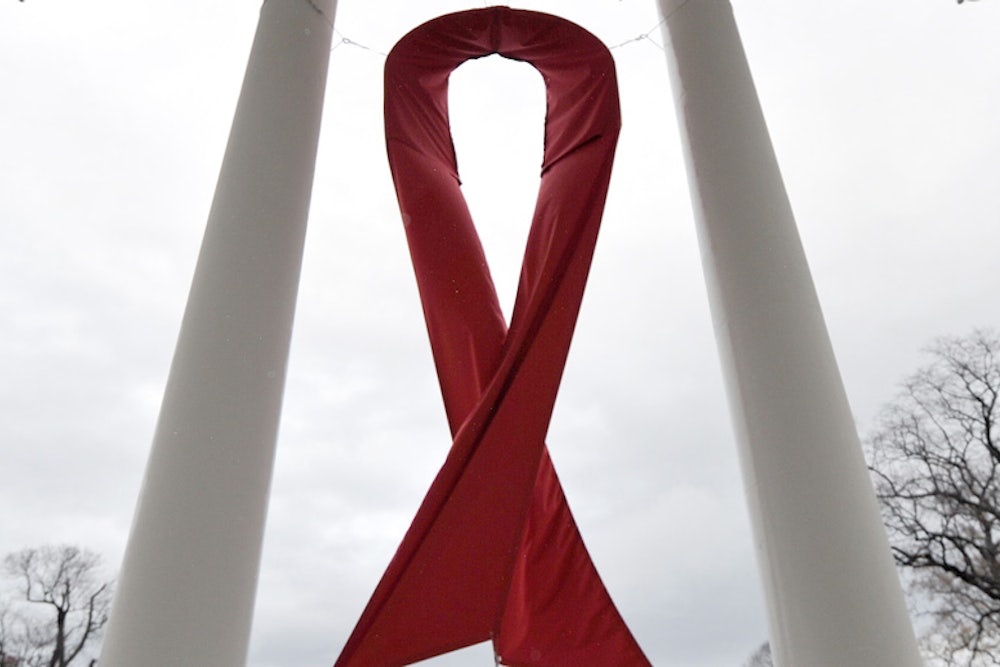After the Berlin Wall fell in 1989, about 35,000 West Germans had been diagnosed with HIV. In East Germany the number was fewer than 500. The cause? West Berlin had in place "political and economic structures that allowed gay men to find each other and addicts to find drugs." East Berlin, on the other hand, had only two gay bars for a population of 1.3 million people.
As Michael Hobbes writes in his investigation into why AIDS ravaged the United States more than other developed nations, it's "the same virus no matter what country you're in." But Hobbes' examination into when it arrived, how it spread, who got it, and why turned up some startling statistics. Below, five of the most stunning, startling figures he uncovered.
1. Access to virus-suppressing drug cocktails varies greatly between the United States and Western Europe.

2. Death rates in the U.S. are still more than twelve times higher than those in Western European countries.

3. Though the death rate from AIDS has greatly diminished since its highest point in the mid-'90s, it remains drastically higher in the U.S. than in the rest of the developed world.

4. In 2011, "nine of the top ten cities for HIV infection were in the Deep South," Hobbes writes. The disparity between Northeastern states is remarkable.

5. And it isn't simply the rate of infection. Residents of the Deep South are far more likely to die from AIDS than residents of other states.

